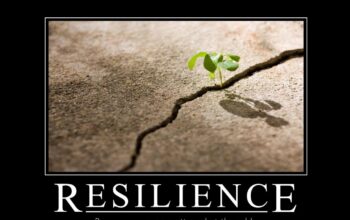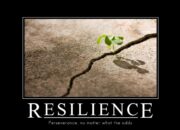In an increasingly unpredictable world, the pursuit of financial safety has never been more critical. Economic fluctuations, unexpected life events, and the ever-present desire for a stable future underscore the importance of robust personal financial planning. Far from being a mere luxury, building a solid financial foundation is an imperative for individuals and families seeking peace of mind, resilience against unforeseen challenges, and the ability to pursue their long-term aspirations. This comprehensive guide delves deep into the multifaceted strategies involved in constructing and maintaining your financial safety net, exploring the core principles, practical steps, essential tools, common pitfalls to avoid, and the future trends that will continue to shape our approach to personal finance.
The Imperative of Financial Security in Modern Life
Why is financial safety so crucial in today’s fast-paced, interconnected global economy? The answer lies in the inherent uncertainties of life and the escalating costs of living. Without a deliberate strategy for financial security, individuals are vulnerable to:
A. Unexpected Expenses: Medical emergencies, car repairs, home maintenance issues, or job loss can quickly derail an unprepared budget, leading to debt and stress. B. Economic Downturns: Recessions, inflation, and market volatility can erode savings and investment values, impacting long-term goals like retirement. C. Long-Term Goals: Without proper planning, aspirations such as homeownership, funding a child’s education, or enjoying a comfortable retirement remain elusive dreams. D. Debt Accumulation: A lack of financial discipline can lead to reliance on credit cards and loans, creating a vicious cycle of high-interest debt that stifles financial progress. E. Mental and Emotional Stress: Financial instability is a leading cause of anxiety and stress, impacting overall well-being and relationships.
Conversely, achieving financial safety brings profound benefits, including reduced stress, increased freedom, and the capacity to seize opportunities as they arise. It’s about empowering yourself to live life on your terms, rather than being dictated by financial constraints.
Pillar One: Crafting a Robust Budget and Cash Flow Management
The cornerstone of any sound financial strategy is effective budgeting and meticulous cash flow management. This isn’t about restriction; it’s about control and awareness.
A. Understanding Your Income and Expenses
The first step is to gain absolute clarity on where your money comes from and, more importantly, where it goes.
- Track Every Dollar: For at least a month, meticulously record all income sources and every single expense. Use budgeting apps, spreadsheets, or even a notebook. Categorize expenses (e.g., housing, food, transportation, entertainment, debt payments). This uncovers hidden spending patterns and “money leaks.”
- Differentiate Needs vs. Wants: Clearly distinguish between essential expenses (needs: rent, utilities, basic groceries, debt minimums) and discretionary spending (wants: dining out, entertainment, subscriptions, new gadgets). This distinction is vital for identifying areas to cut back during lean times or to allocate more towards savings.
- Calculate Your Net Income: This is your take-home pay after taxes, insurance premiums, and other deductions. This is the real amount you have to work with.
B. Developing a Realistic Budget
Once you understand your cash flow, you can create a forward-looking plan.
- Choose a Budgeting Method:
- The 50/30/20 Rule: Allocate 50% of your net income to needs, 30% to wants, and 20% to savings and debt repayment. This is a simple yet effective starting point.
- Zero-Based Budgeting: Assign every dollar of income to a specific category (expense, saving, or debt payment) until your income minus expenses equals zero. This ensures every dollar has a job.
- Envelope System: For cash-based spending, allocate physical cash into envelopes for different categories. When an envelope is empty, spending in that category stops.
- App-Based Budgeting: Tools like YNAB (You Need A Budget), Mint, or Personal Capital automate tracking and provide visual insights.
- Be Realistic and Flexible: An overly restrictive budget is unsustainable. Build in some flexibility for occasional splurges or unexpected minor costs. Regularly review and adjust your budget as your income, expenses, or goals change.
- Automate Savings: The most effective way to ensure you save is to make it automatic. Set up recurring transfers from your checking account to your savings or investment accounts immediately after payday. Treat savings as a non-negotiable expense.
C. Optimizing Cash Flow
Beyond tracking, actively manage your cash flow to maximize its efficiency.
- Reduce High-Interest Debt: Prioritize paying down credit card debt, personal loans, or any debt with high interest rates. The money saved on interest can be redirected towards savings or other financial goals. Consider the “debt snowball” or “debt avalanche” methods.
- Negotiate and Shop Around: Periodically review recurring bills (internet, phone, insurance). Don’t hesitate to negotiate lower rates or switch providers for better deals.
- Increase Income Streams: Explore opportunities for side hustles, freelance work, or skills development to boost your income, accelerating your progress towards financial goals.
- Manage Bill Due Dates: Align your bill due dates with your paydays to avoid overdrafts and ensure timely payments.
Pillar Two: Building a Robust Emergency Fund
An emergency fund is the bedrock of financial safety. It’s a readily accessible pool of money specifically designated to cover unexpected expenses, preventing you from going into debt or derailing your long-term financial plans.
A. Defining Your Emergency Fund Goal
- Calculate Your Essential Monthly Expenses: This isn’t your full budget, but the absolute minimum you need to survive (rent/mortgage, utilities, basic food, minimum debt payments, essential transportation).
- Target 3-6 Months of Expenses: For most individuals, a good starting goal is to save 3 to 6 months’ worth of essential living expenses. If you have a less stable income (e.g., commission-based, self-employed) or dependents, aim for 6-12 months.
- Start Small, Build Steadily: Don’t get overwhelmed by the large target. Begin by saving $500-$1,000 as a “starter” emergency fund, then gradually build it up. Every dollar saved reduces your financial vulnerability.
B. Where to Store Your Emergency Fund
The key criteria for an emergency fund are safety and accessibility. It should not be in volatile investments.
- High-Yield Savings Account (HYSA): This is the ideal location. HYSAs offer better interest rates than traditional savings accounts while keeping your money liquid (easily accessible) and FDIC-insured (up to $250,000 per depositor, per bank).
- Money Market Accounts: Similar to HYSAs, offering slightly higher interest in some cases, often with check-writing privileges.
- Avoid Volatile Investments: Do not put your emergency fund in stocks, bonds, or mutual funds. These investments fluctuate in value, and you might need the money when the market is down.
- Keep It Separate: Store your emergency fund in a separate account from your primary checking account. This reduces the temptation to dip into it for non-emergencies.
C. When to Use Your Emergency Fund
The name says it all: it’s for emergencies only.
- Job Loss or Significant Income Reduction: Provides a crucial buffer while you search for new employment.
- Medical Emergencies: Covers unexpected medical bills or co-pays not covered by insurance.
- Major Car Repairs: Essential repairs that prevent you from getting to work or performing necessary daily tasks.
- Home Repairs: Unexpected issues like a burst pipe, furnace breakdown, or roof damage.
- Unforeseen Life Events: Other truly unexpected events that require immediate financial attention and would otherwise lead to debt.
After using your emergency fund, make replenishing it a top financial priority.
Pillar Three: Strategic Debt Management
Debt can be a powerful tool for building wealth (e.g., a mortgage for a home) or a destructive force that erodes financial safety (e.g., high-interest credit card debt). Effective debt management is crucial.
A. Understanding Good vs. Bad Debt
- Good Debt: Debt used to acquire an appreciating asset or to invest in yourself, potentially increasing your net worth or income.
- Mortgage: Financing a home, which often appreciates in value over time.
- Student Loans: Investing in education to increase earning potential.
- Business Loans: Funding a business that generates income.
- Bad Debt: Debt used to finance depreciating assets or consumption, often with high interest rates.
- Credit Card Debt: High-interest debt for everyday purchases.
- Payday Loans: Extremely high-interest, short-term loans.
- Car Loans (especially long terms/high interest): While necessary for many, a car is a depreciating asset.
The goal is to minimize or eliminate bad debt and manage good debt responsibly.
B. Strategies for Debt Reduction
For bad debt, aggressive reduction is key to building financial safety.
- List All Debts: Compile a comprehensive list of all your debts, including the creditor, current balance, interest rate, and minimum monthly payment.
- Choose a Payoff Strategy:
- Debt Avalanche Method: Prioritize paying down the debt with the highest interest rate first, while making minimum payments on others. Once the highest-interest debt is paid off, roll that payment amount into the next highest. This saves the most money on interest over time.
- Debt Snowball Method: Prioritize paying down the smallest debt balance first, while making minimum payments on others. Once the smallest debt is paid off, roll that payment amount into the next smallest. This method provides psychological wins, keeping you motivated.
- Avoid New Debt: While aggressively paying down existing debt, commit to not taking on any new high-interest debt.
- Consider Debt Consolidation (Cautiously): For high-interest credit card debt, a personal loan with a lower fixed interest rate or a balance transfer credit card (with a 0% introductory APR) can consolidate multiple debts into one, potentially reducing interest payments. However, be wary of fees and ensure you can pay off the consolidated debt within the promotional period.
C. Maintaining a Healthy Credit Score
Your credit score is a reflection of your financial reliability and plays a huge role in your financial safety. A good credit score can unlock lower interest rates on mortgages, car loans, and even impact insurance premiums and rental applications.
- Pay Bills On Time, Every Time: Payment history is the most significant factor in your credit score. Set up automatic payments to avoid missing due dates.
- Keep Credit Utilization Low: Aim to use no more than 30% (ideally under 10%) of your available credit on credit cards. High utilization signals higher risk.
- Maintain a Long Credit History: The longer your credit accounts have been open and in good standing, the better. Avoid closing old, unused accounts unless there’s an annual fee.
- Diversify Credit Mix: A mix of different types of credit (e.g., installment loans like mortgages, revolving credit like credit cards) can be beneficial, but only if managed responsibly.
- Review Your Credit Report Regularly: Obtain a free copy of your credit report from AnnualCreditReport.com (one from each of the three major bureaus annually) to check for errors and fraudulent activity.
Pillar Four: Comprehensive Insurance Coverage
Insurance is a critical component of financial safety, acting as a protective barrier against catastrophic financial loss from unexpected events. It’s the safety net beneath your other financial pillars.
A. Essential Insurance Types
- Health Insurance: Paramount for protecting against astronomical medical costs. Understand your deductible, co-pays, and out-of-pocket maximums.
- Auto Insurance: Required by law in most places and protects you against financial losses from accidents, theft, or damage to your vehicle. Ensure adequate liability coverage.
- Homeowners/Renters Insurance:
- Homeowners Insurance: Protects your home and belongings from damage (fire, theft, natural disasters) and provides liability coverage if someone is injured on your property.
- Renters Insurance: Often overlooked, it protects your personal belongings from theft or damage and provides liability coverage, even if you don’t own the property.
- Life Insurance (if applicable): If you have dependents who rely on your income, life insurance provides a financial safety net for them in the event of your premature death.
- Term Life Insurance: Provides coverage for a specific period (e.g., 20 or 30 years) and is generally more affordable.
- Whole Life Insurance: Provides lifelong coverage and typically includes a cash value component. More complex and expensive.
- Disability Insurance: Protects your income if you become unable to work due to illness or injury.
- Short-Term Disability: Covers a brief period (e.g., a few months).
- Long-Term Disability: Provides income replacement for extended periods, potentially until retirement age. This is often overlooked but can be financially devastating if not in place.
B. Reviewing and Optimizing Your Policies
- Regularly Review Coverage: Life changes (marriage, children, new home, new job) should trigger a review of your insurance needs.
- Shop Around: Don’t stick with the same insurer out of habit. Get quotes from multiple providers annually to ensure you’re getting competitive rates for the coverage you need.
- Understand Your Deductibles: A higher deductible typically means lower premiums, but ensure you can comfortably afford the deductible if you need to make a claim.
- Look for Bundling Discounts: Many insurers offer discounts for bundling multiple policies (e.g., auto and home).
Pillar Five: Strategic Savings and Investment for the Future
While an emergency fund handles immediate needs, long-term savings and investments are crucial for achieving future financial goals and building true wealth. This is where your money starts working for you.
A. Defining Financial Goals
Before investing, clarify what you’re saving for, as this will dictate your investment strategy and time horizon.
- Short-Term Goals (0-3 years): Down payment on a car, vacation, new appliance. Keep these funds in high-yield savings accounts or short-term CDs.
- Mid-Term Goals (3-10 years): Down payment on a house, child’s education fund, starting a business. Consider a diversified portfolio of low-cost index funds or ETFs, possibly with a slightly conservative allocation.
- Long-Term Goals (10+ years): Retirement, significant wealth building. This is where equities (stocks) offer the greatest potential for growth, mitigated by diversification and a long time horizon.
B. Retirement Planning
This is often the most significant long-term financial goal.
- Start Early: Compounding interest is your most powerful ally. The earlier you start, the less you need to save each month to reach your goals.
- Utilize Tax-Advantaged Accounts:
- Employer-Sponsored Plans (401(k), 403(b), etc.): Contribute at least enough to get the full employer match (it’s free money!). Contributions grow tax-deferred.
- Individual Retirement Accounts (IRAs):
- Traditional IRA: Contributions may be tax-deductible; withdrawals in retirement are taxed.
- Roth IRA: Contributions are after-tax; qualified withdrawals in retirement are tax-free. Ideal for those who expect to be in a higher tax bracket in retirement.
- Diversify Your Investments: Don’t put all your eggs in one basket. Invest across different asset classes (stocks, bonds, real estate), industries, and geographies. Use low-cost index funds, ETFs, or target-date funds for broad diversification.
- Regularly Rebalance Your Portfolio: Periodically adjust your asset allocation to maintain your desired risk level and align with your goals.
C. Other Investment Avenues
Beyond retirement, consider other ways to grow wealth.
- Brokerage Accounts: For non-retirement investment goals, a taxable brokerage account allows you to invest in stocks, bonds, mutual funds, and ETFs.
- Real Estate: Can be a powerful wealth builder through appreciation and rental income, but requires significant capital and management.
- Education Savings Plans (e.g., 529 Plans): Tax-advantaged accounts specifically designed to save for educational expenses.
D. Understanding Risk Tolerance
Your risk tolerance is your comfort level with potential fluctuations in investment value.
- Assess Your Comfort Level: Are you comfortable with significant market ups and downs for higher potential returns, or do you prefer more stable but lower-growth investments?
- Time Horizon Matters: Generally, if you have a longer time horizon (e.g., 10+ years for retirement), you can afford to take on more risk, as market downturns have time to recover. Shorter time horizons require less risky investments.
- Diversification Mitigates Risk: While not eliminating it, diversification spreads risk across different assets, reducing the impact of any single investment’s poor performance.
Pillar Six: Continuous Education and Adaptability
The financial world is constantly evolving. Building lasting financial safety requires a commitment to continuous learning and the ability to adapt your strategies.
A. Stay Informed
- Follow Reputable Financial News: Read articles, books, and reputable financial news sources to stay updated on economic trends, market changes, and new financial products.
- Understand Tax Laws: Tax laws change frequently and can significantly impact your financial planning. Stay informed about relevant changes or consult with a tax professional.
- Be Wary of “Get Rich Quick” Schemes: If it sounds too good to be true, it almost certainly is. Stick to proven, long-term strategies.
B. Regular Financial Reviews
Schedule regular “financial check-ups” for yourself.
- Monthly Budget Review: Revisit your budget at least monthly to ensure it’s still realistic and effective.
- Quarterly/Annual Goal Review: Assess your progress towards short, mid, and long-term goals. Are you on track? Do goals need adjustment?
- Annual Portfolio Review: Review your investment portfolio’s performance and rebalance if necessary to maintain your desired asset allocation.
- Professional Guidance: Consider consulting with a fee-only financial planner for a comprehensive review and personalized advice, especially during major life transitions (marriage, children, career change, retirement).
C. Adapt to Life Changes
Financial safety is not a static state; it’s a dynamic process.
- Career Changes: A new job or career path might mean changes in income, benefits (like 401(k) matching), and insurance needs. Adjust your budget and savings accordingly.
- Family Growth: Children bring new expenses and increased insurance needs (life, health). Adjust your budget and long-term savings goals.
- Major Purchases: Buying a home or a new car will impact your debt levels and cash flow. Plan meticulously.
- Economic Shifts: Inflation, interest rate changes, or recessions require a review of your budget and investment strategy to ensure continued resilience.
Common Pitfalls to Avoid on Your Financial Journey
Even with the best intentions, certain traps can derail your progress towards financial safety.
A. Lifestyle Creep
As your income increases, it’s easy for your expenses to rise commensurately. This “lifestyle creep” prevents you from building wealth, as increased income is immediately consumed by increased spending. Consciously save or invest a portion of every raise or bonus.
B. Impulse Spending
Unplanned and emotional purchases can quickly undermine a carefully crafted budget. Implement a “24-hour rule” for non-essential purchases: wait a day before buying to determine if it’s truly necessary.
C. Ignoring Debt (Especially High-Interest Debt)
Hoping debt will go away on its own is a recipe for disaster. High-interest debt compounds rapidly, making it incredibly difficult to escape its grip. Confront debt head-on with a clear payoff strategy.
D. Lack of Diversification in Investments
Putting all your investment eggs in one basket (e.g., investing only in a single company stock) exposes you to immense risk. Diversify across different asset classes, industries, and geographies.
E. Emotional Investing
Making investment decisions based on fear (selling during a market downturn) or greed (chasing hot stocks) almost always leads to poor long-term results. Stick to your long-term plan and avoid reacting impulsively to market fluctuations.
F. Neglecting an Emergency Fund
Without an adequate emergency fund, the first significant unexpected expense will force you into debt, undermining all other financial progress. This pillar is non-negotiable.
The Digital Future of Financial Safety
Technology is increasingly shaping how we manage our finances, offering new tools and insights.
A. Fintech Innovations
Financial technology (Fintech) applications are making financial management more accessible and intuitive.
- Budgeting Apps: Automate expense tracking, categorize spending, and provide real-time insights into your financial health.
- Robo-Advisors: Automated investment platforms that manage diversified portfolios based on your risk tolerance and goals, often at a lower cost than traditional financial advisors.
- Digital Banks: Offer high-yield savings accounts, fee-free checking, and seamless mobile experiences.
- Peer-to-Peer Lending/Borrowing: Alternative lending platforms that can offer different interest rates than traditional banks.
B. Cybersecurity in Finance
As more of our financial lives move online, cybersecurity becomes paramount.
- Strong Passwords and MFA: Use unique, complex passwords for all financial accounts and enable multi-factor authentication (MFA) whenever possible.
- Monitor Accounts Regularly: Check your bank and credit card statements frequently for any unauthorized transactions.
- Beware of Phishing Scams: Be cautious of suspicious emails or texts requesting personal financial information.
- Secure Wi-Fi: Avoid accessing financial accounts on unsecured public Wi-Fi networks.
C. Personalization through AI and Data Analytics
Future financial tools will leverage AI and machine learning to offer highly personalized advice and automation.
- Predictive Analytics: Forecasting future cash flow, identifying potential financial shortfalls, or suggesting optimal savings rates based on your spending patterns.
- Hyper-Personalized Advice: AI-driven financial advisors that offer tailored recommendations for investments, insurance, and debt management based on your unique circumstances and goals.
- Automated Optimization: Systems that automatically rebalance portfolios, find better insurance deals, or even suggest optimal bill payment schedules.
Conclusion
Building your financial safety is not a destination but a continuous journey—a proactive commitment to securing your present and empowering your future. It’s a journey that begins with a clear understanding of your money, reinforced by the discipline of budgeting, shielded by a robust emergency fund, optimized by strategic debt management, protected by comprehensive insurance, and fueled by disciplined long-term investing.
In a world full of uncertainties, the most effective antidote is preparation. By consistently applying these principles, adapting to life’s inevitable changes, and leveraging the evolving landscape of financial technology, individuals can transform financial anxiety into peace of mind, turn aspirations into tangible realities, and cultivate a legacy of lasting financial security. The power to forge this resilient financial future lies firmly in your hands, ready to be built, brick by deliberate brick.










